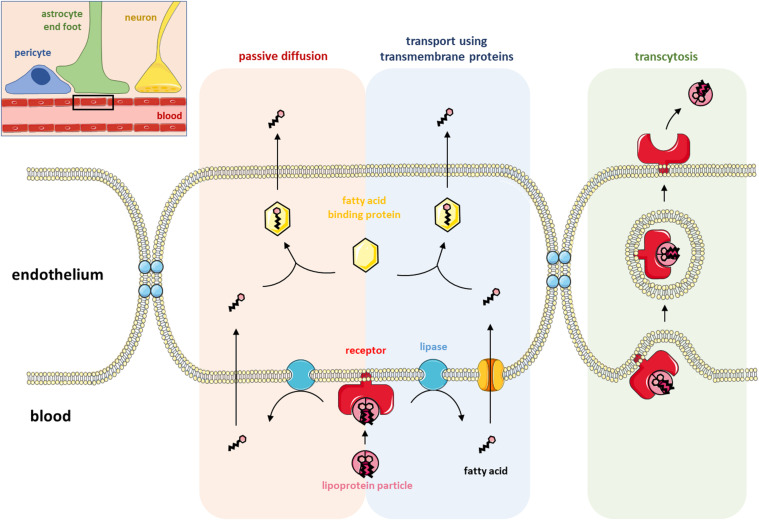FIGURE 1.
Lipid transport at the blood-brain barrier. The top right corner shows a schematic representation of the blood-brain barrier (BBB) with the blood capillary, a pericyte, an astrocyte end-foot and a neuron. The rest of the figure (a magnified view of the black rectangle) illustrates the three ways lipids can cross the BBB: passive diffusion, transport using transmembrane proteins and transcytosis. Fatty acids (FAs) are locally produced in the endothelium after the hydrolysis of lipoproteins by membrane-associated lipase enzymes. FAs can either passively diffuse across the endothelial membrane or be transferred inside the endothelium by the activity of a transmembrane protein. Once in the endothelium of the BBB, FAs shuttle through the cytosol by binding to FA-binding proteins before being transported into the brain. Lipoproteins can also be directly transported into the brain via receptor-mediated transcytosis involving either caveolin- or clathrin-coated vesicles.

